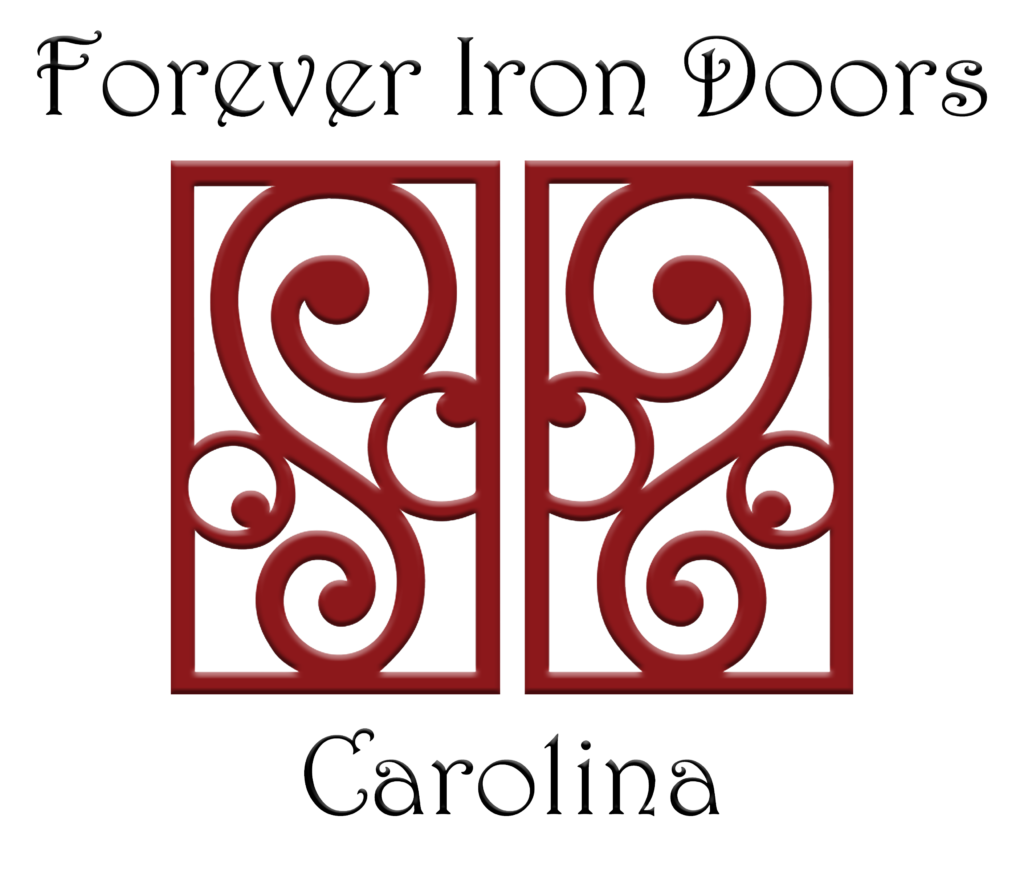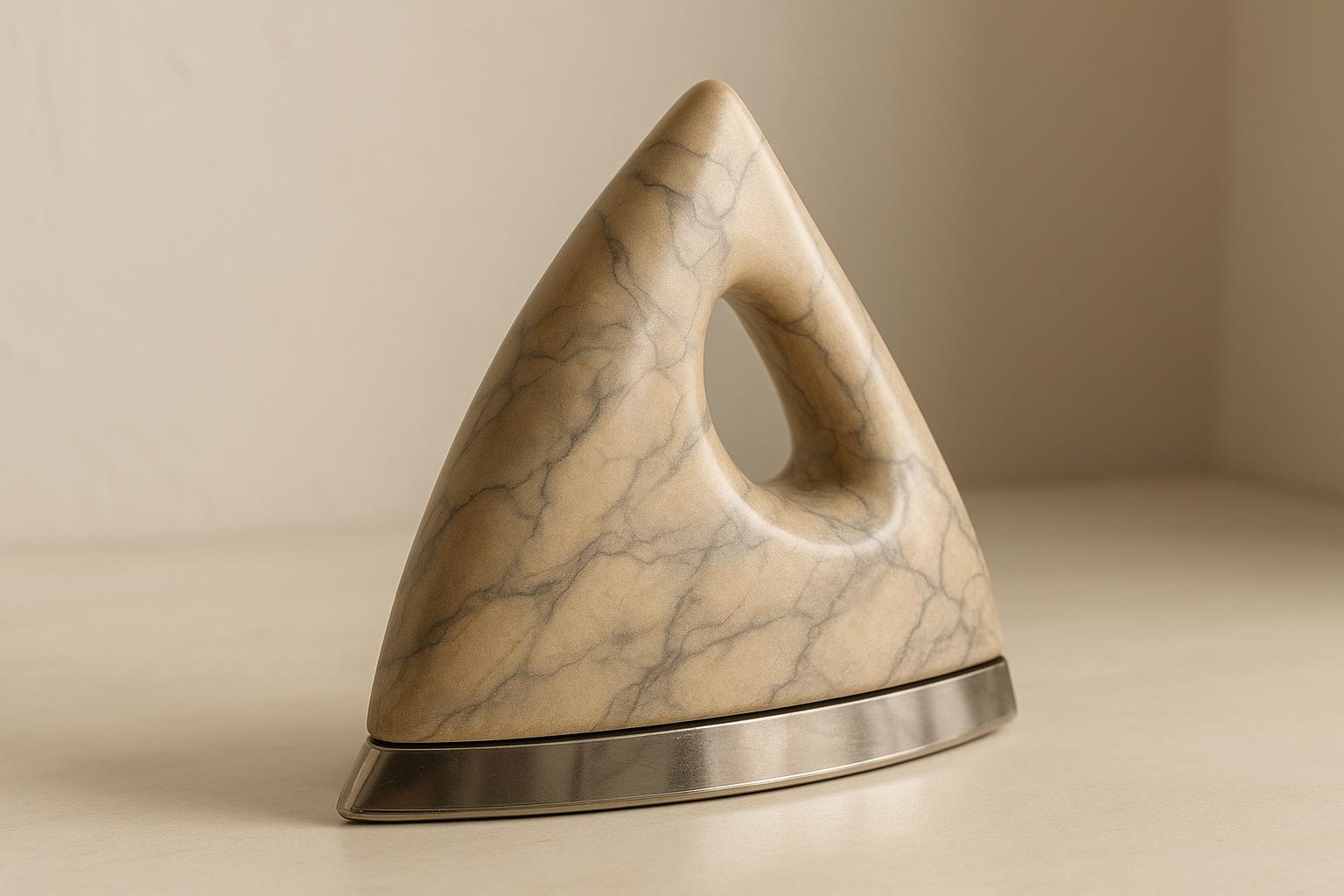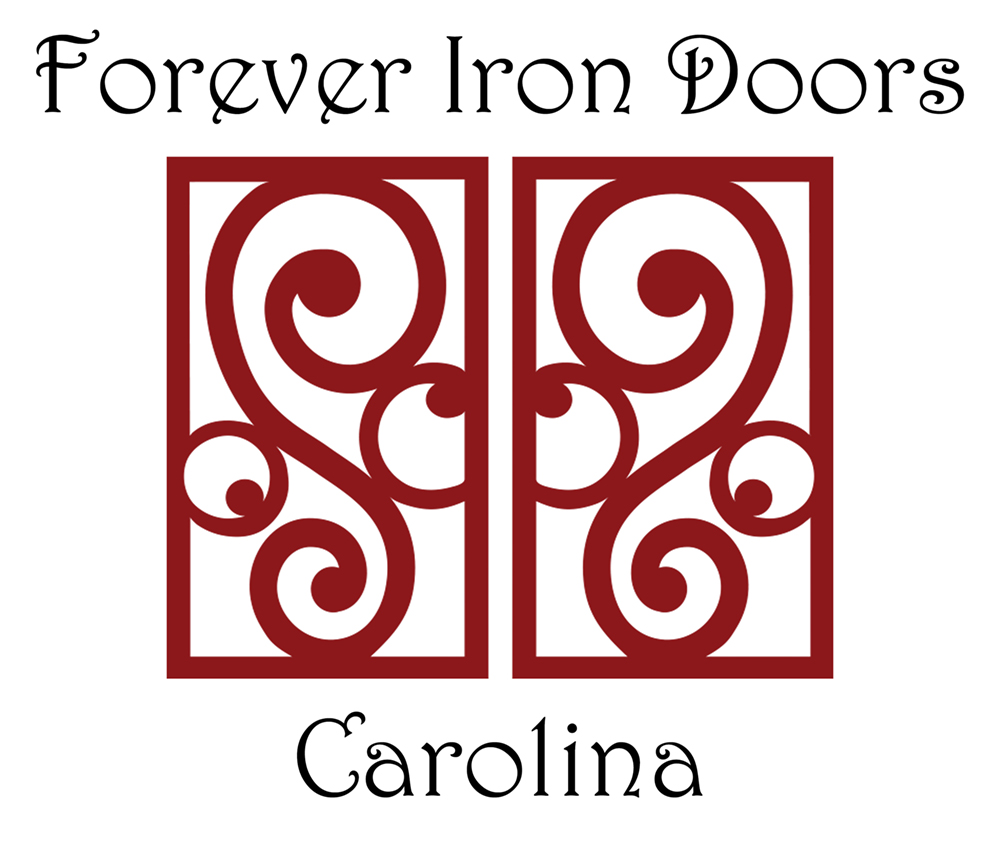Faux painting can transform iron surfaces into stunning finishes that mimic materials like marble, rust, or patina. Whether you’re updating gates, railings, or furniture, these techniques offer a cost-effective way to achieve high-end looks. Here’s what you need to know:
- Why Use Faux Painting? It creates luxurious or aged effects without the expense of real materials. Plus, it adds durability and reduces maintenance.
- Preparation is Key: Clean, sand, and prime the iron surface to ensure the paint adheres properly and lasts longer.
- Top Techniques: Faux rust for a weathered look, patina for a blue-green aged effect, antique finishes for vintage charm, and metallic for a sleek, modern appearance.
- Maintenance: Use sealers for protection and clean surfaces with mild soap to keep them looking fresh.
Preparing Wrought Iron for Faux Painting
Getting your wrought iron prepped for faux painting is the key to achieving a finish that not only looks polished but also stands the test of time. Skipping steps or rushing through this phase can lead to peeling or chipping within months, so it’s worth investing the time upfront.
Surface Preparation Steps
Start by thoroughly cleaning the wrought iron to remove dirt, grease, loose paint, and rust. Use a wire brush or steel wool for this task. For stubborn rust spots, apply a rust remover as directed by the manufacturer, letting it sit for the recommended time.
After cleaning, sand the surface with 120-grit sandpaper to create a slightly rough texture, which helps the paint adhere better. Once sanding is complete, wipe the entire surface with a lint-free cloth to eliminate any remaining dust.
Next, apply a high-quality metal primer in thin, even coats. Be sure to let each coat dry completely before applying the next. For outdoor items, choose a rust-inhibiting primer that contains zinc phosphate. For indoor pieces, a standard metal primer works fine, as long as it’s compatible with your faux painting technique.
Once the surface is prepped, gather the tools and materials you’ll need to bring your faux painting vision to life.
Tools and Materials You’ll Need
Here’s a quick rundown of the essentials:
- Sea sponges: Perfect for creating organic textures.
- Artist brushes: Ideal for adding detailed touches.
- Faux finishing glazes and paints: These stay workable longer, giving you more time to perfect your design.
- Rags, cheesecloth, and paper towels: Useful for blending and wiping away excess paint.
- Plastic drop cloths: Protect your work area from spills and splatters.
- Painter’s tape: Helps you achieve clean, defined lines.
- Disposable gloves: Keep your hands clean and make cleanup easier.
- Spray bottle with water: Mist the surface if the paint starts to dry too quickly, especially when working with glazes.
- Synthetic brushes: For metallic finishes, these brushes help avoid unsightly brush marks.
With your tools ready and your space set up, it’s time to make sure you’re working safely.
Safety Tips for DIY Projects
When working with paints, primers, and glazes, ensure your workspace is well-ventilated. Use fans to create cross-ventilation and, if indoors, open windows on opposite sides of the room. Many products contain solvents that can cause dizziness or headaches in poorly ventilated areas.
Protect your eyes with safety glasses when sanding or using wire brushes, as tiny metal particles can become airborne. A dust mask is also essential to shield your lungs from paint and primer particles, especially if working on older wrought iron that might have lead-based paint.
For your hands, use chemical-resistant gloves. Nitrile gloves are a better choice than latex for long painting sessions since they resist breaking down when exposed to solvents.
Keep a fire extinguisher close by when using oil-based products, and store oil-soaked rags in a metal container with a tight lid. These rags can spontaneously combust if left in a pile or stored improperly, posing a serious fire risk.
Finally, avoid painting in extreme temperatures. Stick to a range of 50°F to 85°F for the best results, as high humidity can slow drying and leave a hazy finish.
Popular Faux Painting Techniques for Iron Surfaces
Once you’ve properly prepped the surface, it’s time to dive into techniques that bring both durability and visual charm to your iron pieces. Whether you’re aiming for a weathered, antique, or metallic look, these methods can help you achieve a finish that matches your design goals.
Faux Rust Technique
The faux rust technique is the perfect way to give wrought iron a naturally aged appearance without the downsides of actual rust. It’s especially suited for outdoor items like gates, railings, or decorative accents where a weathered look feels right at home.
Start with a dark brown or black base coat and let it dry completely. Next, use a sea sponge to dab on iron-based paint in areas where rust would naturally form – think corners, joints, and horizontal surfaces. While the paint is still tacky, apply a rust activator (following the product instructions) to create those distinct rust-like patterns.
To avoid a uniform look, dab the surface with a sponge as the activator reacts, creating a textured and varied effect. For outdoor use, seal the finish with a matte clear coat designed for metal to protect it from actual corrosion while preserving the look.
Antique and Distressed Finishes
Antique finishes bring a sense of time-worn elegance, making them a great choice for indoor wrought iron pieces like chandeliers, decorative screens, or furniture details.
Begin with a dark base coat in shades like deep brown, charcoal, or black. Once it’s dry, use a dry brush technique to apply metallic highlights – bronze, copper, or gold work beautifully. Lightly load your brush with paint, remove the excess on a paper towel, and gently drag it across raised areas to mimic natural wear.
For added authenticity, sand lightly between coats to create subtle wear patterns. Focus on edges and areas that would naturally experience touch or movement, like corners or high-contact spots. Layer darker metallic tones with lighter highlights to create depth, building the effect gradually until it looks just right. The result is a refined finish that feels rich in character.
Patina and Verdigris Effects
Patina effects emulate the striking blue-green weathering that develops on aged copper or bronze, offering a sophisticated touch for architectural elements and decorative pieces.
Start with a dark metallic base coat, such as bronze or copper, and allow it to cure fully. Create a patina glaze by mixing blue-green craft paint with a glazing medium, which slows drying time and gives you more control. Use a sea sponge to dab the glaze onto the surface, focusing on recessed areas where moisture would naturally collect.
Work in small sections, blending transitions with cheesecloth for a smooth, natural look. Thin, multiple layers will give you a more realistic finish than a single heavy application. To add even more realism, incorporate hints of dark green or rust-colored paint in areas that might show additional weathering or repairs.
Metallic and Specialty Finishes
Metallic finishes offer endless possibilities, from brushed nickel to antique copper, allowing you to capture the elegance of high-end metals without the hefty price tag.
Start by applying a matching base coat. While it’s still wet, use a dry brush to create linear textures by dragging it in long strokes. Opt for synthetic brushes to avoid leaving bristle marks. Once the base coat is ready, apply a mica-infused glaze and lightly buff the surface to enhance the metallic sheen. The mica particles settle into the texture, creating a convincing metal grain effect.
For an aged metal look, specialty waxes can also be used. Apply a dark wax over the metallic base coat, then selectively buff areas to create a mix of shine and shadow. This technique is excellent for achieving an antique brass or aged bronze appearance, especially on indoor pieces.
Comparing Faux Painting Techniques
Choosing the right faux painting technique involves more than just aesthetics – it’s about understanding where it works best, how long it lasts, and how much care it needs. The table below highlights the key differences between popular techniques:
| Technique | Best Applications | Durability | Maintenance | Relative Cost |
|---|---|---|---|---|
| Faux Rust | Outdoor iron features like gates, railings, and accents | High durability when sealed | Low upkeep | Moderate |
| Antique/Distressed | Indoor decorative items with a vintage feel | Moderate durability with natural wear | Occasional maintenance | Moderate |
| Patina/Verdigris | Architectural elements and statement pieces | Highly durable when sealed | Low to moderate upkeep | Higher moderate |
| Metallic/Specialty | Contemporary, high-end fixtures | Moderate durability | Requires regular cleaning | Higher |
Let’s dive deeper into how these techniques work and what makes each one unique.
Faux rust is perfect for creating a weathered, aged look on outdoor features. This effect is achieved through carefully timed chemical reactions that mimic natural rust, resulting in a beautifully varied and organic finish. However, it’s crucial to handle the surface gently until it’s fully cured and properly sealed to ensure long-term durability.
Antique and distressed finishes are ideal for adding vintage charm to indoor spaces. They’re forgiving during application, allowing for gradual layering and easy corrections – perfect for DIY enthusiasts. Over time, the natural wear enhances their authentic, aged appearance, adding to their appeal.
Patina finishes, known for their striking blue-green hues, are excellent for architectural elements and statement pieces. Once sealed, they resist weathering effectively and can even help disguise minor surface flaws. However, achieving a smooth, even finish over large areas requires a steady hand and careful attention to detail.
Metallic finishes, with their sleek, modern sheen, are a favorite for high-end décor. But they’re also the most demanding. Even application requires precise brushwork and meticulous surface preparation. Additionally, these finishes need regular cleaning to maintain their polished look, as they tend to show dust and fingerprints more easily.
sbb-itb-cd90297
Caring for Faux Painted Iron Surfaces
Taking good care of your faux painted iron surfaces ensures they stay beautiful and last for years. Just like the effort that goes into creating a flawless finish, regular upkeep keeps that crafted look intact.
Sealing and Protecting Painted Surfaces
The right sealer can make all the difference in protecting your faux finish. A clear coat acts as a shield, guarding against moisture, UV rays, and everyday wear and tear. The type of sealer you choose depends on the look you want and the environment your iron surfaces are exposed to.
For faux rust finishes, a matte sealer works well to maintain a natural, aged look. If you prefer a shinier, wet appearance, go for a glossy sealer. Outdoor pieces – like gates, railings, or decorative accents – benefit from weather-resistant sealers that can handle temperature changes and long-term exposure to the elements.
It’s crucial to match your sealer to your faux finish. For example, oil-based polyurethane pairs best with oil-based paints, as it offers flexibility and durability. On the other hand, water-based polyurethanes can crack or peel when applied over oil-based coatings. To protect against fading, corrosion, and sun damage, use sealers with UV blockers and antioxidants. Always follow the manufacturer’s drying instructions – most sealers need 24–48 hours to cure completely before coming into contact with moisture.
Once your surface is sealed, regular cleaning will help maintain its appearance and durability.
Regular Cleaning and Maintenance
Routine cleaning is key to keeping your faux finish looking fresh. Stick to mild soap and water, and steer clear of abrasive scrubbers or harsh cleaners that could damage the protective sealer.
If you notice fading, clean and dry the surface thoroughly before applying a self-leveling clear coat, like Everbrite Coating, to restore its color and protection. For minor scratches or scuffs, touch-ups are simple: clean and sand the damaged area, wipe it with mineral spirits or paint thinner, let it dry, and then apply matching paint.
Reapply the sealer as needed, especially on surfaces that face harsh weather. Watch for early signs of wear, like water absorption, fading, or chalking, and address them promptly to prevent more serious damage.
With regular care, your faux finish will not only retain its charm but also stay ready for any future updates or custom touches you have in mind.
Custom Faux Finishes from Forever Iron Doors Carolina

When it comes to iron finishes, professional services bring a level of expertise and precision that’s hard to match. While DIY projects might allow for personal creativity, professional finishing ensures durability and a refined look that stands the test of time. With Forever Iron Doors Carolina, you can expect custom finishes that enhance every iron feature, turning them into standout elements of your property.
Custom Designs for Your Property
Forever Iron Doors Carolina offers faux finishes that replicate the look of aged bronze, rust patina, and antique copper. These finishes can be tailored to match virtually any architectural style or personal taste. Whether it’s doors, railings, or window accents, their custom color-matching services ensure a seamless blend with your home’s existing design.
For those looking to make a bold statement, they provide one-of-a-kind color combinations, such as weathered copper accented with black. If you’re after something even more artistic, their hand-painted designs – like graceful white egrets nestled among dark green reeds – transform iron pieces into breathtaking works of art.
Their faux painting techniques adapt to various architectural styles, from sleek modern homes to classic colonial designs or rustic farmhouses. This adaptability ensures that your ironwork doesn’t just fit in but enhances the overall character of your property.
Professional Results and Quality Work
The beauty of custom finishes lies not just in the design but in the flawless execution. Forever Iron Doors Carolina’s team of skilled artists specializes in creating textures, finishes, and intricate hand-applied details that elevate iron elements into true statement pieces. Their professional application process ensures proper surface preparation, precise layering, and sealing, resulting in a finish that’s as durable as it is stunning.
Beyond doors, their custom faux finishing services extend to other wrought iron features like railings, windows, and decorative accents. This cohesive approach ties all your iron elements together, creating a unified and polished look throughout your property. Whether it’s a subtle touch or a bold artistic statement, their expertise ensures every detail is just right.
Conclusion
Faux painting offers an incredible way to transform wrought iron into eye-catching finishes that resemble high-end materials – all without breaking the bank. From the rustic charm of a rust patina to the timeless elegance of verdigris or the character of a distressed antique look, these techniques bring a fresh perspective to iron surfaces, making them stand out in unique and stunning ways.
At Forever Iron Doors Carolina, the combination of artistic creativity and technical precision ensures that every faux finish is a masterpiece. Whether it’s doors, windows, railings, or gates, their meticulous process – featuring detailed preparation, premium materials, and skillful layering – delivers a polished, cohesive result that enhances your property’s overall aesthetic. With the right sealing and upkeep, these finishes maintain their beauty and durability for years, showcasing the lasting appeal of faux painting in modern wrought iron design.
FAQs
What are the advantages of using faux painting techniques on wrought iron surfaces?
Faux painting techniques offer a range of benefits when applied to wrought iron surfaces. For starters, they help protect the surface by making it more resistant to chipping, peeling, and fading, which means the finish will look great for a longer time. On top of that, these finishes can cleverly hide small flaws while adding texture, giving the surface a more refined and elegant look.
What’s even more exciting is their ability to replicate the appearance of materials like aged patina, antique metals, or even wood. This opens up countless design options, making faux painting a smart and stylish choice – perfect for spaces where durability and visual appeal matter most.
What are the best faux painting techniques for iron surfaces, and how do I choose the right one?
To pick the best faux painting technique for your iron surfaces, start by visualizing the style you want. Some of the most popular choices include patina finishes for a weathered, aged appearance, antique finishes for a vintage vibe, or metallic finishes for a sleek, contemporary look. Also, consider the surface’s location – indoors or outdoors – and whether it will be exposed to heavy use or harsh weather. These factors will help you determine the level of durability needed.
Preparation makes all the difference when it comes to achieving long-lasting results. Begin by thoroughly cleaning the surface, removing any rust, and applying a primer. For outdoor projects, using high-quality, rust-resistant or UV-resistant paint is crucial to ensure the finish holds up over time. With the right prep work and materials, you can turn your iron surfaces into eye-catching, durable features.
How can I maintain and protect faux painted iron surfaces to keep them looking great for years?
To keep faux-painted iron surfaces looking great and lasting longer, regular maintenance is essential. Start by cleaning them frequently to clear away dirt, grease, and debris. For outdoor pieces, check for rust and lightly sand any rough or rusty spots before applying paint or a sealant. A corrosion-inhibiting primer is a must for preventing rust, especially on exterior surfaces.
Make it a habit to inspect these surfaces periodically for any signs of wear or damage. If you spot chips or scratches, touch them up with rust-resistant paint and reapply a protective sealant as needed. These simple steps will help maintain the beauty of your iron surfaces while boosting their durability over time.



